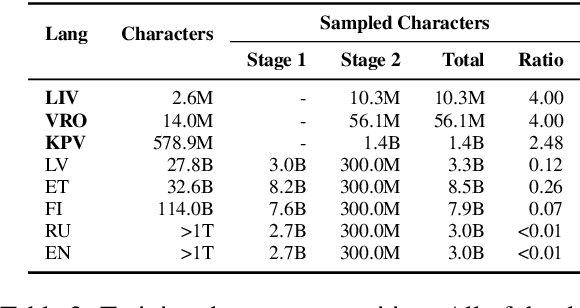LLMs for Extremely Low-Resource Finno-Ugric Languages
Paper and Code
Oct 24, 2024



The advancement of large language models (LLMs) has predominantly focused on high-resource languages, leaving low-resource languages, such as those in the Finno-Ugric family, significantly underrepresented. This paper addresses this gap by focusing on V\~oro, Livonian, and Komi. We cover almost the entire cycle of LLM creation, from data collection to instruction tuning and evaluation. Our contributions include developing multilingual base and instruction-tuned models; creating evaluation benchmarks, including the smugri-MT-bench multi-turn conversational benchmark; and conducting human evaluation. We intend for this work to promote linguistic diversity, ensuring that lesser-resourced languages can benefit from advancements in NLP.
 Add to Chrome
Add to Chrome Add to Firefox
Add to Firefox Add to Edge
Add to Edge